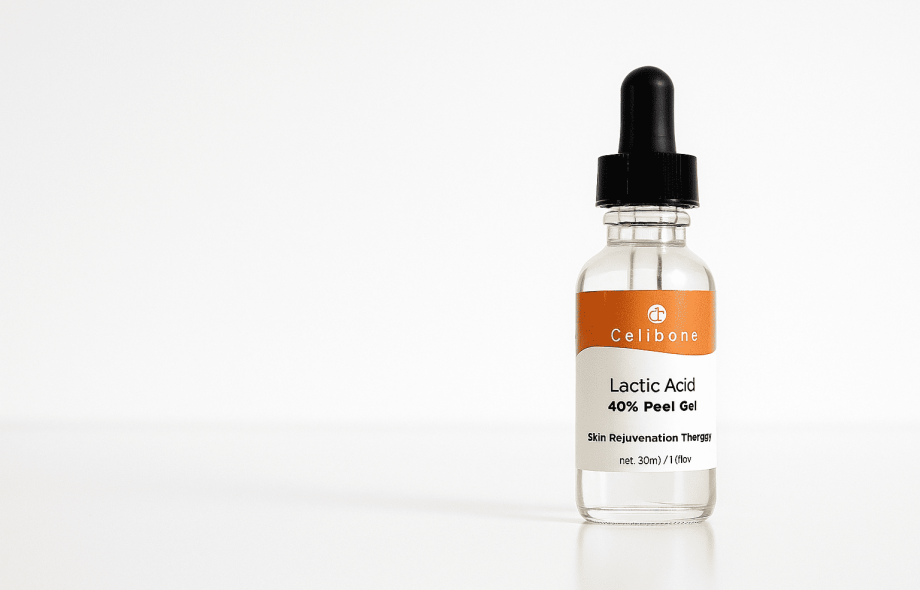You just had a peel – your skin is tingling, glowing, and maybe feeling a bit rough. You are excited about the outcomes. Hold on a minute there (this is now where things really matter) how you take care of your skin after the peel, is just as vital as the treatment itself.
Wondering things like “Can I wash my face now?” or “Should I moisturize or let it peel naturally?” Good aftercare is the difference between “meh” results and seriously smooth, glowing skin.
These 8 tips will assist you in healing smart, glowing safely, and to make your lactic acid peel work for you.
1. Don’t Touch That Glow (Yet)
Keep your hands off.
Immediately after your peel, your skin is in its healing phase. This implies no scrubbing, no exfoliating, no picking. Not even a bit. Touching your face or peeling off flaky skin too early can lead to scarring or irritation.
Just leave your skin to do its thing, as it can heal itself.
2. Ice Packs Are Your Best Friend
Feeling the heat? Totally normal.
During the initial 24 to 48 hours, there will be redness and warmth as normal. An icepack or a cold compress wrapped in a soft fabric may also assist in ensuring that the inflammation is controlled and your skin is soothed.
Just don’t press too hard. Be gentle. This is healing, not punishment.
3. Keep It Simple, Keep It Hydrated
No need to experiment with a dozen new serums.
Apply a light hydrating moisturizer (fragrant free). Your skin barrier is fragile, so take your bet with soothing products, such as hyaluronic acid, ceramides, or aloe vera.
4. Sunscreen, Like…Every Day
Seriously.
Your skin is extra sensitive to UV rays after a peel, and sun exposure can cause dark spots or even undo the whole peel’s benefits.
Use a broad-spectrum sunscreen (SPF 30 or higher) every day—rain or shine. Yes, even if you’re staying inside near windows.
5. Pause the Actives
We’re talking retinol, AHAs, BHAs, and anything labeled “intense.”
Give your skin at least 5–7 days of downtime before reintroducing these. Too much too soon can cause redness, peeling, or even a chemical burn.
Let your skin rebuild first.
6. Add Brighteners (When the Time Is Right)
Once your skin’s healed—usually after about a week—you can start boosting your glow with skin-friendly ingredients like alpha arbutin powder. It helps brighten up any post-peel pigmentation and evens out your complexion without being too harsh.
Just mix a little into your serum or moisturizer and watch the magic happen over time.
7. Avoid Sweat-Fests
This might be tough, but for at least 2–3 days post-peel, avoid the gym, saunas, and long hot showers.
Sweating can irritate fresh skin, and steam can make redness worse. Instead, go for a chill walk, binge a show, or dive into a good book. Rest is part of the glow-up.
8. Be Patient with Peeling
You might see some flaking around day 2 or 3—and that’s a good thing. Don’t panic. Don’t pick. And don’t over-moisturize to “stop” the peeling.
Let the dead skin fall off naturally. The smooth, fresh layer underneath is worth the wait.
Quick Recap
After peeling, treat your skin like royalty:
- Skip the gym and hot showers
- Avoid harsh products
- Stay hydrated
- Wear sunscreen
- Keep your hands off your face
Gentle care gets you the best long-term results.
FAQs
Q: How long does it take to heal from a lactic acid peel?
A: Most people are fully healed in 5–7 days. Redness and flaking can last a few days depending on your skin type and strength of the peel.
Q: Can I wear makeup after a lactic acid peel?
A: Wait at least 24–48 hours, or until the flaking subsides. If you must wear makeup, go for lightweight, non-comedogenic products.
Q: Is it normal for my skin to feel tight or dry?
A: Totally. That tight, dry feeling is a sign that old skin is on its way out. Use a gentle, hydrating moisturizer to stay comfortable.
Q: What if I didn’t peel at all?
A: No worries! Peeling isn’t always visible. Even without flaking, the acids are working below the surface to refresh and renew your skin.
 :
https://www.pinterest.com/cellbone1
:
https://www.pinterest.com/cellbone1

